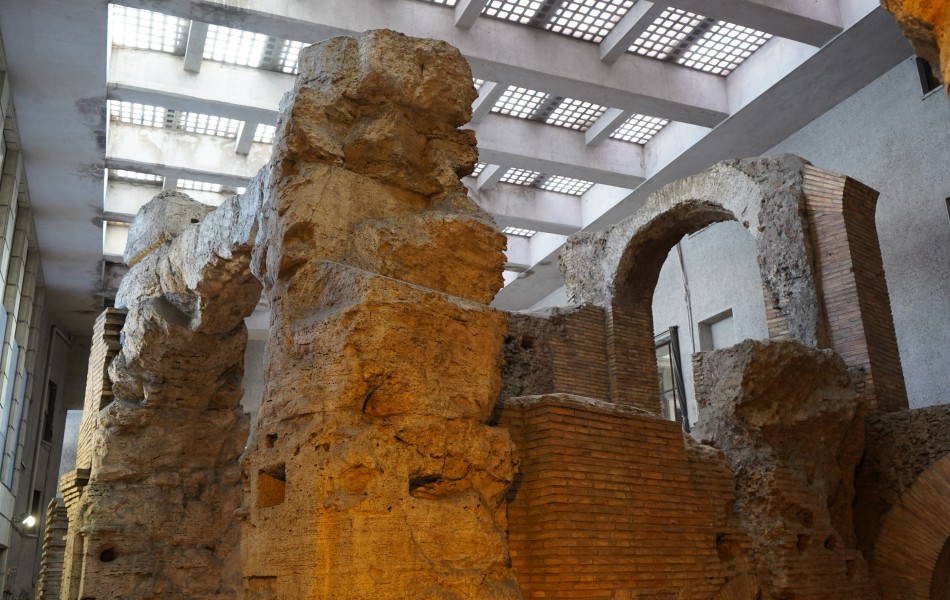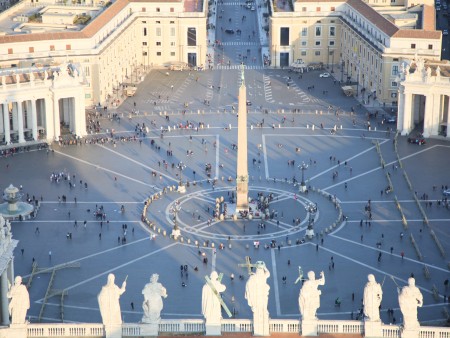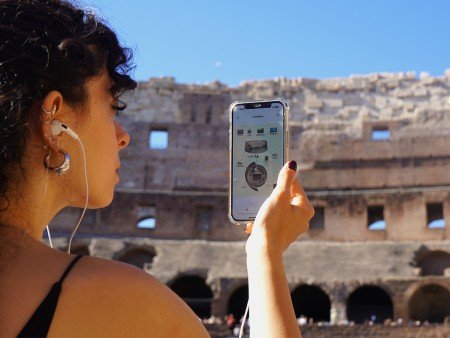Piazza Navona Underground: Rome's First Permanent Stadium
The underground ruins of Piazza Navona: towering walls for the Greek-style Olympic Games in Rome, the vision of the Emperor Domitian

11 December 2024
Rome Off the Beaten PathBeneath the vibrant life of Piazza Navona, with its street performers, bustling cafes, and fountains, lies a lesser-known but equally compelling world: the remains of the Stadium of Domitian. Built in the 1st century AD, this underground complex reveals the hidden layers of Rome’s history, transporting visitors back to the days of Emperor Domitian and his grand vision for public entertainment. The Stadium of Domitian was an architectural marvel of its time, built to host athletic games in the Greek tradition. Unlike the brutal gladiatorial spectacles of the Colosseum, this stadium celebrated contests that showcased skill, strength, and endurance. Constructed in 86 AD, it marked Domitian’s efforts to align Rome with the cultural sophistication of Greece, cementing his legacy as a patron of the arts and sports. The structure could accommodate up to 30,000 spectators, who came to cheer on athletes from across the empire.
Emperor Domitian's Stadium in the basement of Piazza Navona: a Rome in the Greek style
Domitian, the Roman emperor from 81 to 96 AD, was a complex figure whose reign combined ruthless authority with an ambitious drive to leave his mark on the Eternal City. Among his most enduring legacies was the creation of the Stadium of Domitian, a structure that symbolized his desire to bring Greek culture and ideals into the heart of Rome. Inspired by the athletic competitions of ancient Greece, Domitian envisioned a grand arena that would not only host games but also elevate Rome’s cultural prestige.
The Stadium of Domitian was the first permanent arena in Rome built specifically for agones—the Greek term for athletic contests. Before this, such events had typically been staged in temporary wooden arenas. Domitian’s decision to construct a permanent stadium was groundbreaking, reflecting his ambition to make these contests a cornerstone of Roman public life. Measuring an impressive 275 meters in length and 106 meters in width, the stadium was modeled after Greek stadia, such as those in Olympia and Delphi, but with a distinctly Roman twist. It was built with massive tiers of seating, capable of accommodating 20,000 to 30,000 spectators, and lavishly adorned with marble, statues, and decorative friezes.
Domitian’s vision extended beyond the games themselves. The stadium became a centerpiece of his revival of the Ludi Capitolini, or Capitoline Games, a series of athletic, musical, and equestrian competitions established during the Republican era but forgotten for centuries. Domitian reintroduced the games with great fanfare, elevating them to imperial prominence. These events not only celebrated physical prowess but also honored the gods, reinforcing the emperor’s divine authority. Participants competed in running, wrestling, discus throwing, and even poetry and musical performances, showcasing the breadth of Roman and Greek culture.
Domitian’s motives for building the stadium were multifaceted. By associating himself with the gods through the games, he sought to strengthen his image as a divine ruler. At the same time, the stadium served as a political tool, providing free entertainment that reinforced public loyalty and distracted from the difficulties of his reign. This blend of cultural ambition and political strategy was characteristic of Domitian, whose rule was marked by both innovation and controversy.
Though Domitian’s reign ended abruptly with his assassination in 96 AD, his vision for the stadium endured. Over the centuries, the structure influenced the development of public arenas in Rome and beyond, cementing its place as a symbol of the emperor’s enduring impact on the city’s cultural and architectural heritage.
What You Can See in Piazza Navona Underground Today
Today, the underground of Piazza Navona offers a glimpse into the stadium’s ancient grandeur. Visitors can see sections of the curved perimeter walls, constructed with opus caementicium—a form of Roman concrete that enabled the creation of large, durable structures. These walls once supported tiered seating that rose high above the arena, providing a panoramic view of the games below. The arches and corridors, still intact in parts, are a testament to Roman engineering ingenuity, designed to efficiently move tens of thousands of spectators to their seats. Excavations have uncovered staircases, vaulted passageways, and storage areas that formed the backbone of the stadium’s operations. These spaces highlight the logistical complexity of hosting large-scale events in antiquity, from managing the flow of crowds to preparing equipment for the games. Archaeological finds such as pottery, tools, and coins offer additional insights into the daily lives of those who worked behind the scenes to bring these events to life. Fragments of marble decorations and inscriptions unearthed in the underground hint at the stadium’s aesthetic appeal. Far from being purely utilitarian, the Stadium of Domitian was a showcase of Roman artistry, adorned with intricate carvings and ornamental details that elevated it beyond a mere venue for athletic contests.
From decline to rediscovery of the ancient Stadium under Piazza Navona
As the Roman Empire declined, so did the Stadium of Domitian. During the medieval period, it fell into disrepair, and much of its materials were repurposed for new construction. By the Renaissance, the stadium was buried under layers of newer buildings, with its memory preserved only in the elongated shape of Piazza Navona. Modern archaeological excavations in the 20th century brought the stadium back into the light, uncovering its substructures and a treasure trove of artifacts.
The underground of Piazza Navona: a modern link with ancient Rome
Today, the ruins of the Stadium of Domitian provide a fascinating connection between ancient Rome and the present. The underground site includes detailed exhibits, 3D reconstructions, and interpretive panels that recreate the stadium's original splendor. Visitors can walk through its corridors, imagining the roar of the crowd and the tension of the athletes preparing for competition. One of the most fascinating aspects of the underground is its connection to the modern layout of Piazza Navona. The piazza’s elongated oval shape directly follows the footprint of the stadium’s arena. This continuity illustrates how Rome has evolved over centuries, layering new lives and purposes atop its ancient foundations. The bustling energy of Piazza Navona today mirrors the vibrancy of the stadium in its prime, creating a poignant link between past and present. The Piazza Navona underground isn’t just a collection of ruins; it’s a story etched into stone and mortar. It tells of a time when Rome sought to balance Greek cultural refinement with its own imperial grandeur, creating spaces where the citizens of the empire could come together to witness feats of human achievement. It’s a reminder of the enduring legacy of Roman innovation and the layers of history that lie just beneath the surface of the Eternal City.
Our categories:
You may also be interested ...

Vatican Private Tour with Sistine Chapel & St. Peter's Basilica: Renaissance’s Wonders
Private tour
Discover with a skip the line Private Vatican Tour the Sistine Chapel, Vatican Museums and St Peter’s Basilica
starting from: € 275

Colosseum Guided Audio Tour with Roman Forum and Palatine Hill
Private tour
Discover Ancient Rome’s secrets and history with our immersive Colosseum guided audio tour, rich in image and content
starting from: € 51 € 42